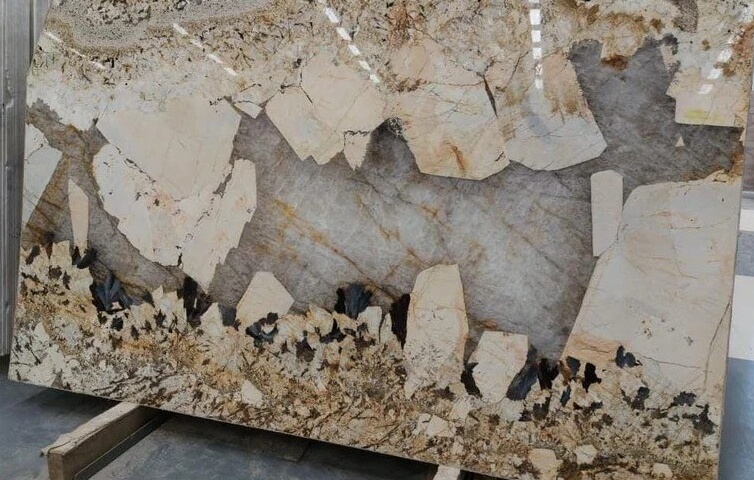
How Indian Statuario Marble Can Increase Your Home’s Real Estate Value
September 3, 2025
Maintenance and Care Guide for Alaska White Granite Countertops
September 15, 2025Choosing the right stone can make or break a commercial project. In the middle of a material choices paragraph, consider Patagonia Quartzite India as an option that blends durability with design; it's especially suited for high-traffic lobbies, façades, and hospitality interiors.
Patagonia Quartzite India: Performance and Technical Specs
Patagonia Quartzite India offers exceptional hardness and weather resistance. For architects and specifiers, key technical points to include in project documents are: density, flexural strength, water absorption, slip-resistance rating, and recommended sealants. Typical quartzite has Mohs hardness around 7-8, low porosity, and excellent thermal stability — all critical for exterior cladding and commercial flooring. Request third-party lab reports and sample panels to verify batch consistency before approval. Include target values (ASTM/EN equivalents where relevant) and acceptable tolerances for mechanical performance in the specification.
Patagonia Quartzite India: Detailing, Fabrication, and Installation
Successful specification is more than naming the stone; it's detailing how it will be fabricated and fixed. Provide clear requirements for slab thickness, edge profiles, anchoring systems for façades, grout/expansion joint widths, and acceptable veining variation. Work closely with fabricators to confirm cutting tolerances, honed vs. polished finishes, and recommended adhesives. Include a mock-up and installation supervision clause in the contract so expectations around site adjustments, handling, and tolerances are clear.
Specifying Patagonia Quartzite India in Project Documents
When writing the specification clause, be precise: list the quarry/source, acceptable finish (e.g., honed, leathered, polished), dimensional tolerances, performance criteria, and mock-up approval process. Add acceptance criteria for visual variation and color range, and require suppliers to provide lab certificates and lead-time confirmations. Define warranty terms and logistics responsibilities to avoid procurement delays and scope gaps.
Commercial Considerations: Cost, Lead Time, and Supply Chain
Budgeting for Patagonia Quartzite India should reflect material cost per square meter plus fabrication, transport, customs (if applicable), and on-site handling. For commercial bids, request firm delivery schedules, FOB/CIF options, and clear payment milestones tied to delivery and inspection. Factor in slab yields and expected waste for pattern-matching runs — consistent color batches reduce rework and change orders. Ask suppliers for contingency plans and storage recommendations to protect slabs on long projects.
Sustainability and Lifecycle Benefits
Patagonia Quartzite India scores well on lifecycle assessments because of its longevity and low replacement rate. Specify quarry rehabilitation practices, water-management documentation, and transport emissions where green building credits are desired. Durable stone reduces long-term maintenance and replacement costs, which supports total-cost-of-ownership arguments in value-engineering meetings.
Specification checklist for design teams
- Source: verified quarry and batch number.
- Finish: choose honed, polished, or leathered and where to use them.
- Thickness: minimum slab thickness for floors and cladding.
- Performance: target values for water absorption, flexural strength, slip rating.
- Fabrication: edge tolerances, joint widths, and anchoring details.
- Mock-up: full-size mock-up and sign-off procedure.
- Maintenance: sealant type, cleaning exclusions, reseal frequency.
Make maintenance and warranty explicit. For high-traffic zones, recommend inspections and a replacement threshold to manage lifecycle costs. Tripura Stones provides sample panels, technical data sheets, and installation support to reduce on-site queries immediately.
Combining technical clauses with clear commercial terms helps protect design intent while keeping budgets and schedules predictable. A supplier experienced in large commercial orders helps ensure consistent color runs and delivery.
Why Tripura Stones for Patagonia Quartzite India
Tripura Stones pairs technical guidance with reliable supply chains, offering certified Patagonia Quartzite India along with fabrication partnerships and warranty documentation. That combination shortens approvals, lowers risk, and helps deliver the distinctive, long-lasting finishes commercial clients expect. Partner with Tripura Stones to keep your project on budget, on time, and built to perform.




